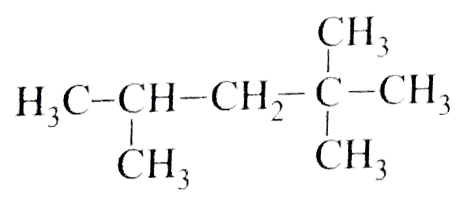Ribose and deoxyribose differ in structure around a single carbon, namely
C-1
C-2
C-3
C-4
The correct Answer is:B
To understand the difference between ribose and deoxyribose, we need to analyze their structures, particularly focusing on the carbon atoms.
1. Identify the Sugar Type:
- Ribose and deoxyribose are both pentose sugars, meaning they each contain five carbon atoms.
2. Draw the Basic Structure:
- Start by drawing a five-carbon ring structure for both sugars. Each carbon atom will be numbered from 1 to 5.
3. Add Hydroxyl Groups (OH):
- In ribose, each of the carbon atoms (except for the carbonyl carbon) will have a hydroxyl group (–OH) attached to them.
- For ribose, the structure can be represented as:
- C1: –OH
- C2: –OH
- C3: –OH
- C4: –OH
- C5: –CH2OH
4. Identify the Key Difference:
- The critical difference between ribose and deoxyribose lies at carbon number 2.
- In ribose, carbon 2 has a hydroxyl group (–OH).
- In deoxyribose, carbon 2 has a hydrogen atom (–H) instead of a hydroxyl group.
5. Conclude the Difference:
- Therefore, ribose has the formula C5H10O5, while deoxyribose has the formula C5H10O4. The absence of one oxygen atom in deoxyribose (specifically at carbon 2) is what gives it the name "deoxy," meaning "without oxygen."
Final Answer:
Ribose and deoxyribose differ in structure around carbon number 2, where ribose has a hydroxyl group (–OH) and deoxyribose has a hydrogen atom (–H).
---
- Ribose and deoxyribose are both pentose sugars, meaning they each contain five carbon atoms.
- Start by drawing a five-carbon ring structure for both sugars. Each carbon atom will be numbered from 1 to 5.
- In ribose, each of the carbon atoms (except for the carbonyl carbon) will have a hydroxyl group (–OH) attached to them.
- For ribose, the structure can be represented as:
- C1: –OH
- C2: –OH
- C3: –OH
- C4: –OH
- C5: –CH2OH
- The critical difference between ribose and deoxyribose lies at carbon number 2.
- In ribose, carbon 2 has a hydroxyl group (–OH).
- In deoxyribose, carbon 2 has a hydrogen atom (–H) instead of a hydroxyl group.
- Therefore, ribose has the formula C5H10O5, while deoxyribose has the formula C5H10O4. The absence of one oxygen atom in deoxyribose (specifically at carbon 2) is what gives it the name "deoxy," meaning "without oxygen."
Ribose and deoxyribose differ in structure around carbon number 2, where ribose has a hydroxyl group (–OH) and deoxyribose has a hydrogen atom (–H).
Topper's Solved these Questions
- NUCLEIC ACID AND VITAMIN BOOK - FIITJEECHAPTER - NUCLEIC ACID AND VITAMIN EXERCISE - ASSIGNMENT PROBLEMS (SUBJECTIVE)
3 Videos
- LIQUID SOLUTION BOOK - FIITJEECHAPTER - LIQUID SOLUTION EXERCISE - Single Integer Answer Type Question
10 Videos
- ORES AND METALLURGYBOOK - FIITJEECHAPTER - ORES AND METALLURGYEXERCISE - MATCHING LIST TYPE QUESTIONS
3 Videos
Similar Questions
Ribose in RNA and deoxyribose in DNA differ in the structure around which carbonatom?
View Solution(a) Name the branched chain component of starch.
(b) Ribose in RNA and deoxyribose in DNA differ in the strucute around which carbon atom ?
(c ) How many peptide linkages are present in a tripeptide ?
View Solution
Knowledge Check
Ribose and 2-deoxyribose can be differentiated by
AFehling's reagentBTollen's reagentCBarfoed's reagentDosazone formation.Ribose and 2 - deoxyribose can be differentiated by .
AFehling's reagentBTollen's reagentCBarfoed's reagentDOsazone formation.A ribose (but not deoxyribose) nucleotide is
ACytosine - pentose sugar - phosphateBGuanine - pentose sugar - phosphateCThymine - pentose sugar - phosphateDUracil - pentose sugar - phosphate
A pair of diastereomers that differ only in the configuration about a single carbon atom are called:
View SolutionA pair of diastereomers that differ only in the configuration about a single carbon atom are called
View SolutionA pair of diastereomers that differ only in the configuration about a single carbon atom are called
View SolutionThe structure of azido carbon disulphide is
View SolutionIn the structure,
 the number of carbons are :
the number of carbons are :
View Solution